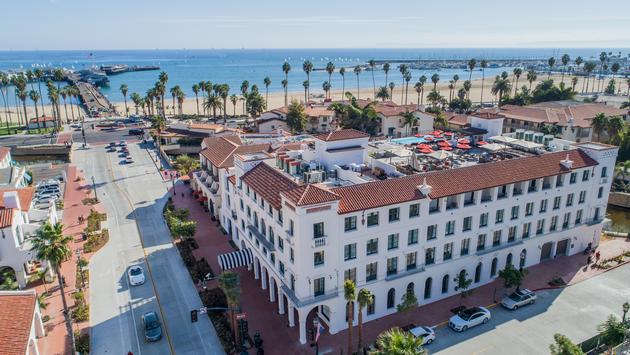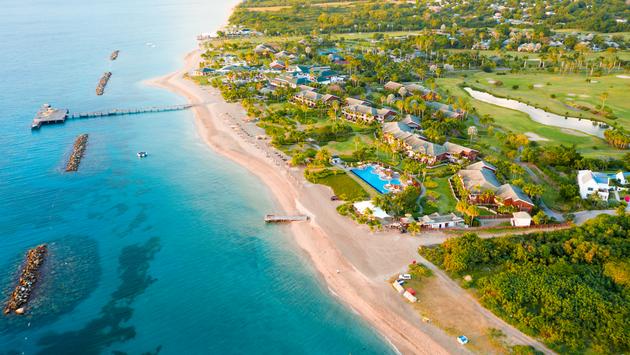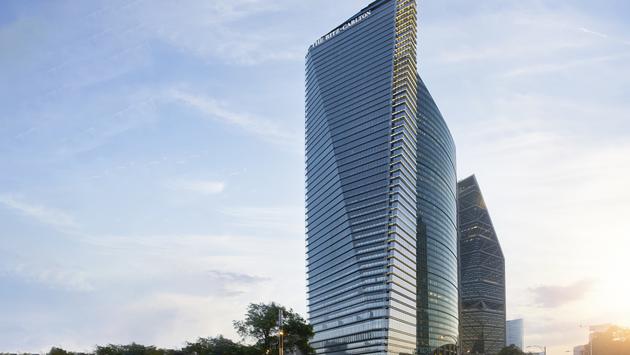Despite financial concerns, the global hotel industry continues to thrive. Prices and occupancy have risen worldwide even as consumer costs continue to increase.
The latest HotStats research found that the industry was producing solid numbers. Occupancy rates were up in Europe; the U.S. is approaching pre-pandemic levels, and China is showing signs of life.
The market is beginning to stabilize in the U.S. after sharp declines between January and March. HotStats research revealed that the country might be reaching a plateau. However, performance is within 10 percent of pre-pandemic levels.
The ongoing health emergency has hit the hotel and restaurant industry the hardest in Latin America, where 60 percent of the personnel are women and 80 percent are informally employed.

Latin America Struggles
Lockdowns have been the primary measure to stop the spread of COVID-19, but the cost has been very high for jobs in tourism. Just in tourist hotels and restaurants in Latin America, 45 percent of the workers lost their jobs during the second quarter of 2020 due to the pandemic, according to the International Labor Organization (ILO), with women and youth being the most affected.
Since the pandemic began in Mexico, there have been fewer jobs in tourism. Still, the most significant annual drop occurred in the first quarter of 2021, with almost 18 percent fewer jobs than in the same period of 2020, according to data from the Mexican Secretary of Tourism (SECTUR). Activities in hotels and restaurants are the hardest hit, with 35 percent of businesses closing permanently.
Recovering tourism is key to overcoming the employment crisis caused by COVID-19 in the nation, says the ILO report titled "Towards a sustainable recovery of employment in the tourism sector in Latin America and the Caribbean." In the Caribbean, it impacted 35 percent of employment, while in Latin America, it was 10 percent.
Tourism accounts for 15.5 percent of Mexico's GDP, adding to the ILO publication. In this nation, almost 75 percent of all visitors are nationals, a minimal advantage given the health crisis and the more significant travel restrictions.
On the Road to Recovery
In the first quarter of the year, there were 3.6 million direct jobs in tourism, meaning that this industry accounts for 8 percent of the total employment in the country, according to the Tourism Ministry. Before the pandemic, this figure was 13.3 percent, says the ILO report.
By April 2020, when the country registered a high number of coronavirus cases but the lockdown was not announced yet, more than 4,492,000 employees worked in restaurants and accommodation services, according to the National Survey of Occupation and Employment (ENOE). By June 2021, there were just over 4 million workers in the tourism industry.
The ENOE figures show a recovery, although more than 452,000 tourism workers have not been able to return to their jobs, which represents 10 percent of the workforce before the pandemic. The ILO report says that of the total jobs generated in Mexico, almost 9 percent are related to tourist activities. Meanwhile, in rural areas, tourism accounts for 5 percent of the sources of income.
Women Are the Most Affected Group
In Latin America, women in tourist hotels and restaurants hold 58 percent of employment, according to the ILO report, specifically "in occupations related to care tasks," in which wages are lower.
This trend is seen all over, but the situation worsens in countries with the highest female unemployment rates. Some figures to consider: in Mexico, 54 percent of the jobs in tourism are performed by women, while in Bolivia, the figure reaches 79 percent, and in Argentina, it's 47 percent.
At a regional level, of all the female workers, 8.8 percent are in hotels or tourist restaurants. However, Mexico’s rate is 12 percent, the third highest after Bolivia (12.7 percent) and Peru (12.1 percent). According to the ENOE, of the more than 4 million currently employed in hotels and restaurants, 60 percent are women.

The report also found that most of the jobs generated in these sectors are informal. Young people are another group greatly affected by this problem, with 58 percent in the same situation.
In Mexico, the figures are even higher. The informal employment rate for women in tourism is 80.4 percent, and for young people, 74.1 percent. Compared to seven other countries—Argentina, Bolivia, Brazil, Chile, Colombia, Costa Rica, and Peru—Mexico is where more female workers are employed without social security, a written contract, stable salary or employment.
Colombia (80.3 percent) is second in informal job rates for female workers. When it comes to young people, the country trades places with Mexico. In Colombia, 75 percent of young people who work in tourism do so informally, while in Mexico, it is 74.1 percent.
Although the ILO report does not include figures for migrants, it does highlight that this group is also subject to informal employment.
The report concludes that while the tourism pandemic “did not affect all workers equally, the loss was greater for women, young workers, migrant workers, and those who took jobs informally." However, for those that are part of more than one group, for example, a young migrant woman, the adverse effects of this crisis were more significant.
The Middle East Comes Back to Earth
After hitting a profit high in March, Middle East gross operating profit per available room (GOPPAR) has had two consecutive months of decline. Still, the good news is that the region continues to track above pre-pandemic levels, and the dip is likely more to do with seasonality than COVID-19 or other factors.
GOPPAR hit $73 in May, a full $16 higher than in May 2019. The rate continues to drive the profit gains, with an average daily rate (ADR) hitting $184; however, the rate has slid back since its high mark in April of close to $285.
Cost creep is having an impact on the bottom line. Total payroll is still below pre-pandemic levels but is climbing and is now $22 higher above its April 2020 low. Meanwhile, utility expenses are ticking upward but more likely a trend in seasonality with utilities going up in the region’s warmer months.
China Tries to Find Footing
After COVID lockdowns hampered much of the country’s travel and tourism industry, China is still underperforming vis-à-vis the rest of the globe, but there are some encouraging signs of life.
Occupancy is still well down versus 2019 but did move six percentage points up in May over the previous month. The problem, however, is a depleted rate that now sits $23 lower than in May 2019. China's ADR is only $2 higher than it was at its pandemic low in April 2020.
The good news is that as travel returns, so, too, shall hotel performance. GOPPAR in May hit only $5.53 but was coming off back-to-back months of negative GOPPAR. Here’s hoping for the start of a more positive and robust summer season.
Corporate Travel

Business travel is also showing steady improvement, and HotStats found that the May corporate revenue mix percentage is now within three percentage points of its May 2019 comparison. Gross operating profit per available room (GOPPAR) topped $90 in March and has remained at that level.
Europe shows occupancy rates that are the highest since November 2019. The ADR or bonus is now on par or higher than before the pandemic. The May 2022 European ADR was $30 higher than in May 2019 and is now up 127 percent from its all-time low in May 2020, according to HotStats.
Complementary revenue was also up and is now just $6 from its May 2019 level. GOPPAR is also now at the same levels as 2019.
















